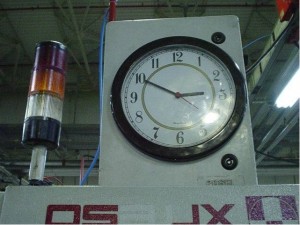Jun 15, 2015 | Posted by Ben Thompson
”We did not make production today because we had problems with the equipment” – a phrase that in manufacturing means that we had a bad day. After fixing the problem and getting the production to run again, do we sit back and try to understand what happened?
Why do I have so many problems with my equipment? Maintenance tells me that there was nothing wrong with the machine. Engineering tells me that we do not have enough capacity. My Supervisors tell us that our Operators need more training. Quality tells that we have problems with materials and my Supply Chain manager tells me Quality does not know what they are talking about. My OEE looks bad and I do not understand a reason why.
Ahhh – the OEE (Overall Equipment Efficiency). A performance indicator that many of us use to measure how the plant is performing relative to equipment and production losses. Many of us live or die by it. Others like to argue that it is not a true indicator of our problems with Down Time. If the machine is not scheduled to run is this considered Down Time? When the Operator goes on a coffee break – is this considered Down Time? Do we include this in our calculations of OEE? When we conduct a changeover on a press how much time is actually spent on set-up (exchange of dies) and how much time do we spend on adjustments – starting, stopping, adjusting, starting, stopping, etc … How much time is spent waiting for the inspection of the first piece?. We huff and puff and argue – since we all want our numbers to look good. Everybody has an opinion and nobody has true data.

In its simplest form it is an analog clock connected to the “logic” of a machine or an automated process (as shown above). The Down Time Clock measures total duration of machine stops – regardless of the reasons or causes. At the start of each work period (a shift for example) a clock is reset to 12:00. When the machine is operating (running, producing parts) the clock is NOT running. It stays at 12:00. The clock runs only when the machine stops.
By the end of the shift we know exactly how many minutes the machine was down – not producing parts. The Supervisor records the actual down time per shift and the clock is reset to 12:00 again. Simple.

In this particular case the machine was down for 2 hours and 50 minutes. That’s 170 minutes of down time per shift. When we started working on this project we were told the “we do not have enough capacity”. After we installed the Clock and identified true causes of the problem we were able to reduce down time to less than 30 minute per shift – plenty of capacity was found. We saved the company about $200,000 – they did not need to buy an extra machine. AND that’s what TPS is all about.
How accurate is your down time? You might surprise yourself.
Marek